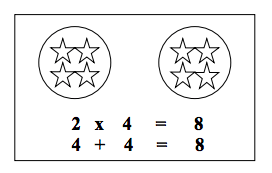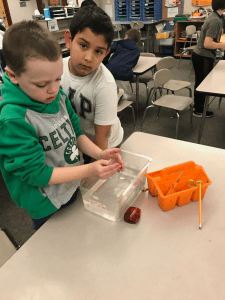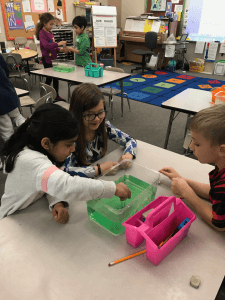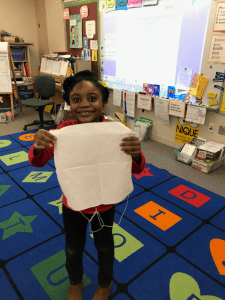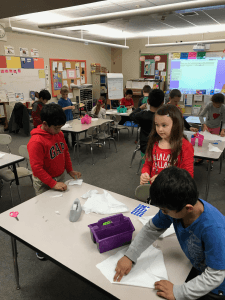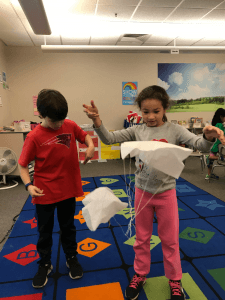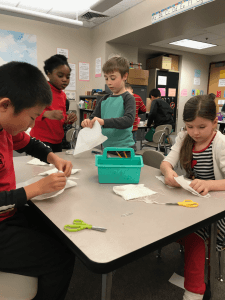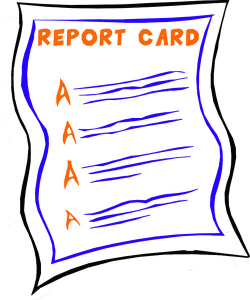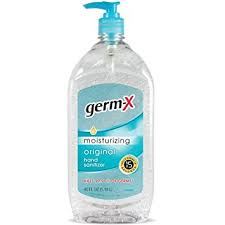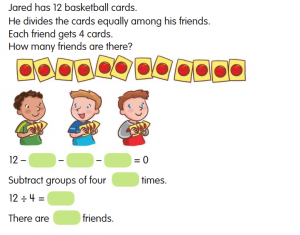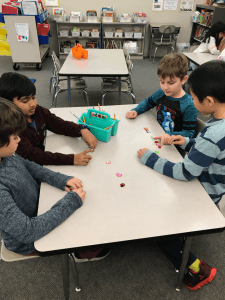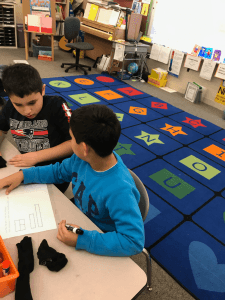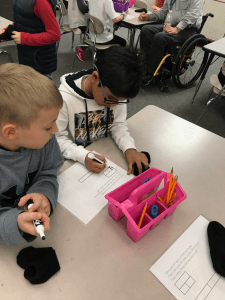Posted by kavery508 | Posted in Uncategorized | Posted on December 17, 2018
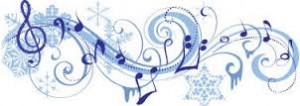 We’re almost there! Just a couple more snowflakes and we’ve reached our goal and earned our special day. As a special reward for demonstrating good work habits, students are invited to wear pajamas to school Friday. Please keep in mind the following guidelines for appropriateness and safety:
We’re almost there! Just a couple more snowflakes and we’ve reached our goal and earned our special day. As a special reward for demonstrating good work habits, students are invited to wear pajamas to school Friday. Please keep in mind the following guidelines for appropriateness and safety:
- Kids will be going outside, so dress for the weather: PJs with tops and bottoms are best. Sweats work equally well, or a combination of the two.
- Sneakers or regular footwear are a must for coming to school/going home/recess. Kids are allowed (not required) to bring slippers–but keep in mind they’ll be wearing them all over school, including the bathrooms!
- Nightgowns are not recommended but if they are worn, leggings or shorts must be worn underneath.
- No toys, stuffed animals, or accessories, please.
On Friday, we will celebrate by making crafts, reciting seasonal poetry; writing a main event with description to accompany Raymond Briggs’ The Snowman; singing together at an all-school sing-a-long; and more! Thanks for the countless ways you support your child’s learning. These kids are so well cared for physically, emotionally, and academically and I’m proud to be sharing their journey with you. I wish you the happiest of holidays, and all the best in 2019!
 We’re wrapping up our study of Opinion Writing in style! Here are some more from 1) Avery and 2) Kian on why kids should have recess; 3) Ronav on why there should be summer vacations; and 4) Luana on why dogs make the best pets: 1) One reason is, you will have to hold in so much energy without recess. You can’t really sit still so you can’t focus without recess. 2) Also, kids need to to learn about the world around them. For example, you can learn about nature. 3) My first reason is, you can spend time with your family. You can visit your cousins grandparents, and aunts and uncles. 4) Another reason is, dogs are friendly. They like to sit next to you so you can pet them. Great work!
We’re wrapping up our study of Opinion Writing in style! Here are some more from 1) Avery and 2) Kian on why kids should have recess; 3) Ronav on why there should be summer vacations; and 4) Luana on why dogs make the best pets: 1) One reason is, you will have to hold in so much energy without recess. You can’t really sit still so you can’t focus without recess. 2) Also, kids need to to learn about the world around them. For example, you can learn about nature. 3) My first reason is, you can spend time with your family. You can visit your cousins grandparents, and aunts and uncles. 4) Another reason is, dogs are friendly. They like to sit next to you so you can pet them. Great work!
 In math this week, students will be applying their new knowledge of multiplication and division when solving word problems. This week’s math homework asks them to draw pictures or symbols to show their work when solving these. One method we’ve taught them is to draw circles and stars, like in the picture below:
In math this week, students will be applying their new knowledge of multiplication and division when solving word problems. This week’s math homework asks them to draw pictures or symbols to show their work when solving these. One method we’ve taught them is to draw circles and stars, like in the picture below:
These can be used in division, too. Here’s how: when you know the total and the number of groups and you want to find the number in each group, draw circles for the groups and deal (like playing cards) stars to each circle. In the above picture that would look like this: 8 ÷ 2 = 4. Kids would draw 2 circles and then put one star in the first circle, then the second circle, then repeat until you have “used up” the 8 items. This shows them there are 4 in each group.
Now let’s say you know the total and the number in each group, and want to find the number of groups. In the above example that would look like 8 ÷ 4 = 2. In this case, you draw groups of 4 until you “use up” the 8 items.
The ‘circle and stars’ idea comes from a game that kids can play at home with any numbers: Circles and Stars
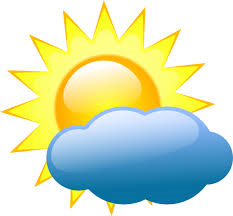 This kids have been learning to ask and test questions about the natural world using the topic Air and Weather. We found out that although air is invisible it takes up space and can be manipulated. We conducted investigations to learn about the ways we can trap air, and built parachutes based on air resistance!
This kids have been learning to ask and test questions about the natural world using the topic Air and Weather. We found out that although air is invisible it takes up space and can be manipulated. We conducted investigations to learn about the ways we can trap air, and built parachutes based on air resistance!

